Disclosure: This post contains affiliate links from Amazon and other affiliates. We may get paid if you buy something or take action after clicking one of the photos or links below. As an Amazon Associate I earn from qualifying purchases. See our full Disclosure Policy here.
Mt. Vesuvius. One of the world’s most dangerous volcanoes! The only active volcano in mainland Europe. Who in their right mind would want to climb Mt. Vesuvius?
Danger. Volcano. Physical activity. All words that brought attention when researching things to do in the Naples area while on our recent cruise. As a little girl, I was interested in the tragic story of Pompeii and the eruption on August 24, 79AD. When I found out I could hike the volcano that caused such a catastrophic event, I planned my day around it! So, here’s all about my climb up Mt. Vesuvius.
We were dropped off by our tour leader at the entrance where we paid for our tickets. We began our ascent to the top of the volcano. It wasn’t hard at first. As we continued, the gravel underneath our feet really began to tire us due to being so thick. At one point, Chris looked over at me and said sarcastically, “Boy, this is fun.” I couldn’t help but think of the history of Pompeii as I continued on.
The Mt. Vesuvius Eruption
With the force of 100,000 atomic bombs, Mt. Vesuvius erupted spewing gas and volcanic ash high up into the air in the shape of what Pliny the Younger described as an umbrella pine. (I suggest some research on the story of Pliny and his uncle who went to the rescue after the eruption. Plinian eruptions were named after his description of the violent, quickly expanding clouds into the atmosphere.)
The eruption, lasting about 24 hours, caused about 16,000 deaths in the area, including people in the towns of Pompeii and Herculaneum. Some people were buried alive by tephra fragments while others died from the pyroclastic surge, or cloud of toxic gas. Herculaneum is better preserved due to being covered in mud instead of flaming pumice like Pompeii, due to the direction of the wind.
There is controversy on the actual date that Mt. Vesuvius erupted.
Archeologists have found some people wearing warmer clothing to suggest the eruption occurring later in the year. The crops discovered were more typical of October, as was evidence of sealed wine fermenting jars. Some researchers reject the date due to wind patterns that were not typical for that time of year. But as we all know, Mother Nature has a mind of its own.
Mt. Vesuvius’s last eruption was during World War II in 1944 and caused one of the biggest losses of any US bombardment group during the war. US Army Air Forces were forced to evacuate. When they returned days later, almost all of the B-25 Mitchell bombers in Pompeii Airfield were destroyed at fault of the ash and tephra. This eruption destroyed the funicular cable car that went up Mt. Vesuvius. It was never rebuilt.
Mt. Vesuvius is a ticking time bomb.
It has been over 70 years since the last eruption, the longest dormancy in centuries. An eruption would put an estimated 3 million people at risk. The Italian government hopes to have 14-20 days warning of the next eruption to allow time to evacuate citizens. There are about 600,000 people living in the “red zone” at the base of Mt. Vesuvius. The Italian government has offered to pay these citizens to move out of the area, but few have taken them up on this opportunity. I was told that they were raised there and do not want to leave what they know.
You can get here by train or car, but since I’ve been known to get lost following people, we hired a guide for the area that day. Making your way up Mt. Vesuvius, be prepared for a steep incline with loose rocks under your feet. When you reach the summit of Mt. Vesuvius, you can see the Bay of Naples (on a clear day), as well as Pompeii in the distance. While walking around the summit, you can peer into the crater that is about 1000 feet deep and may even see steam venting in between the rocks.
At the top of Mt Vesuvius
We were told that we were lucky to be able to see the beautiful view of Naples on a sunny day. Some people make the climb and only see the clouds. While we did pass over some clouds (which was pretty cool!), we had amazing views over the city.
Looking into the volcano, we could see smoke seeping from the volcano. It is somewhat frightening to be so close to something that eventually will cause destruction.
Before making our descent, we browsed the souvenir area at the top. Watch the video below to see more details of the hike to the top of Mt Vesuvius.
Tips for Climbing Mount Vesuvius
The ticket office to make your way up Mt. Vesuvius is open daily at 9AM, except for in poor weather. Cost is 8 Euros. I would advise to get there early to avoid crowds, or at least 1 hour before closing time.


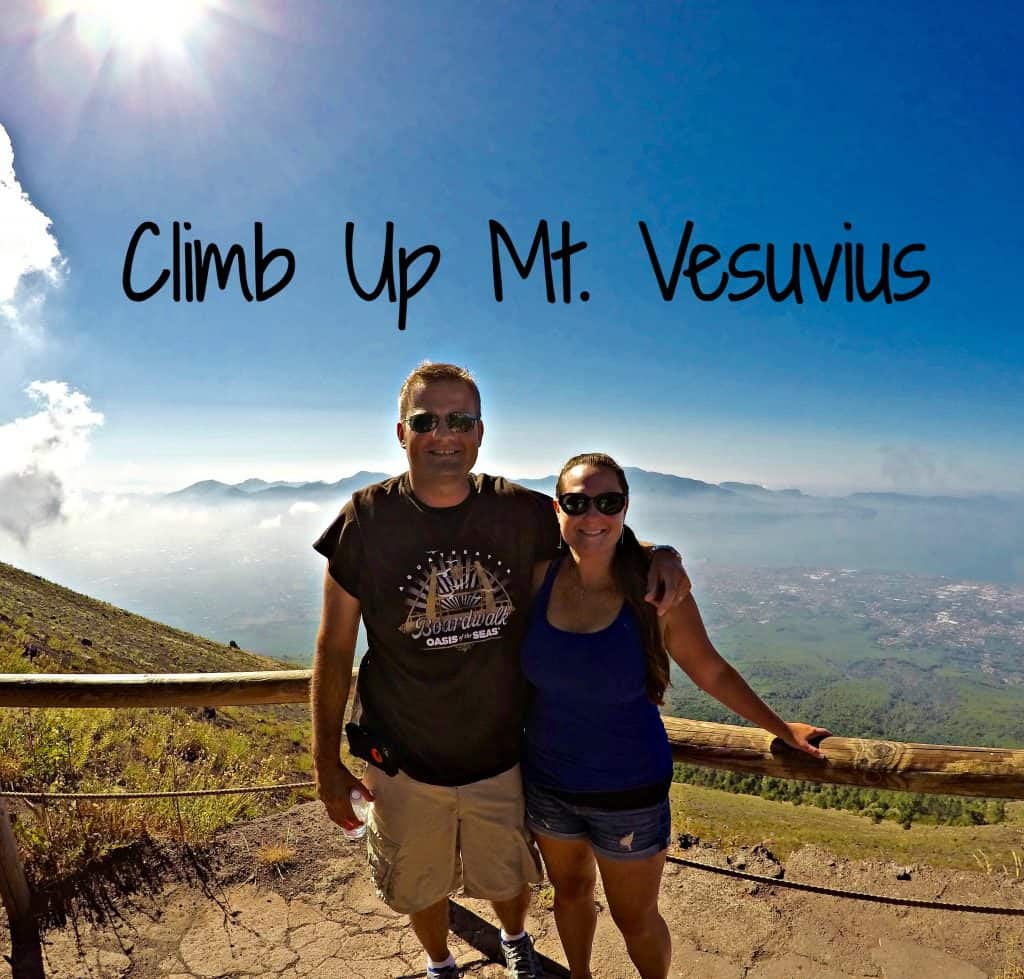
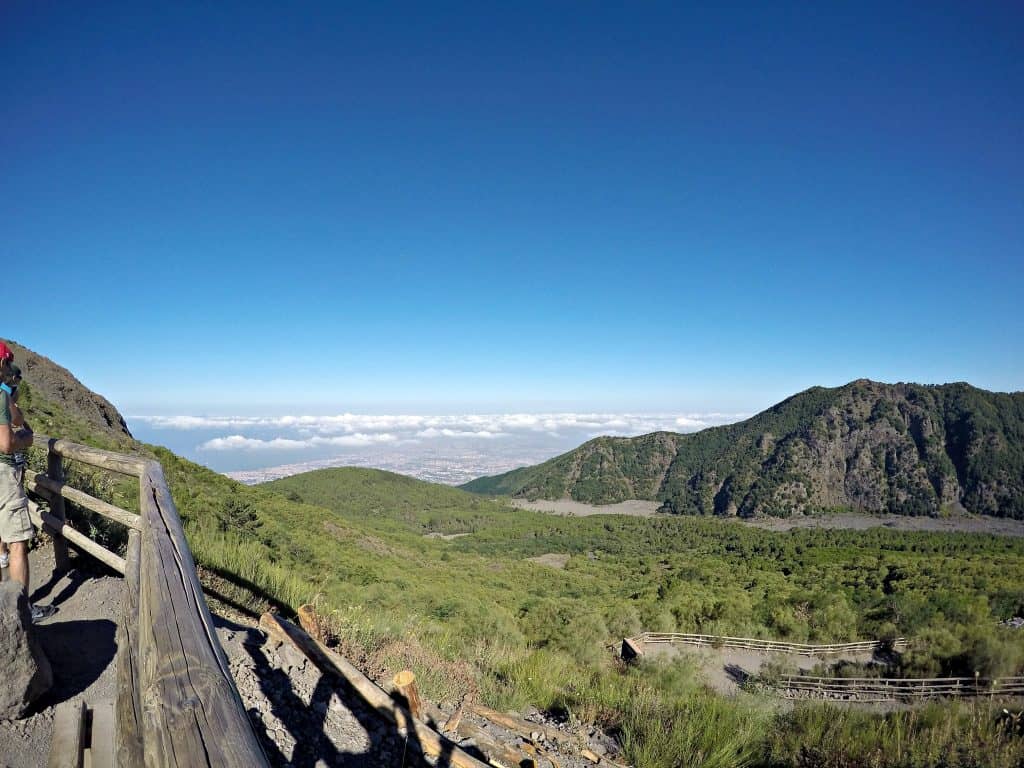
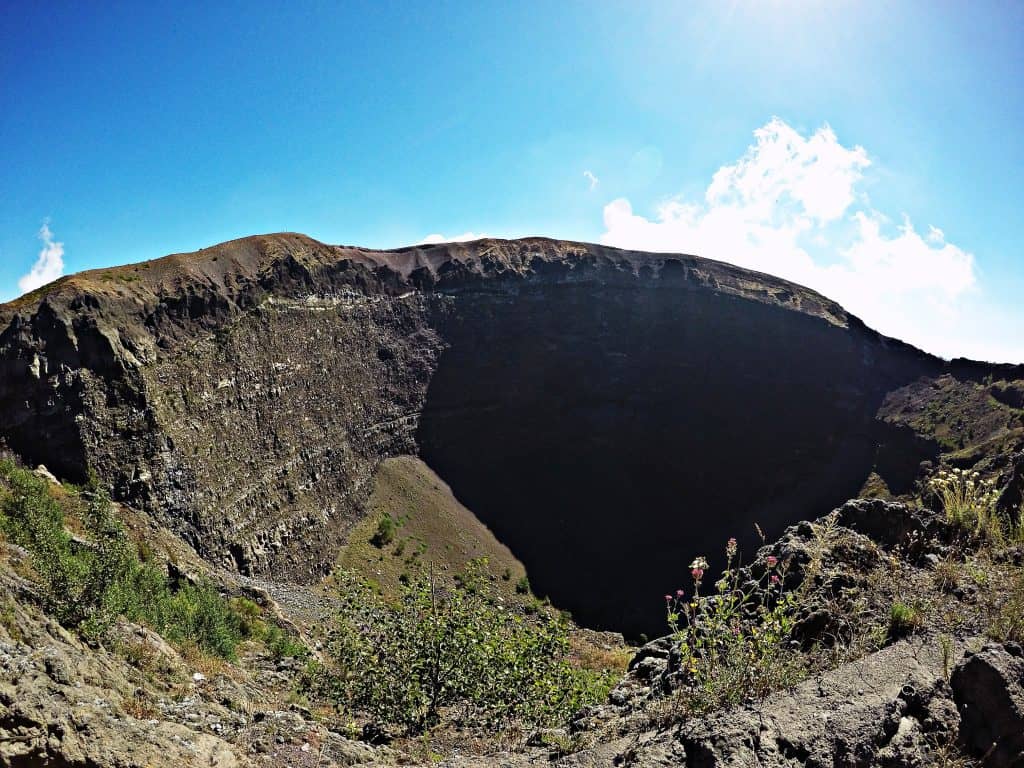
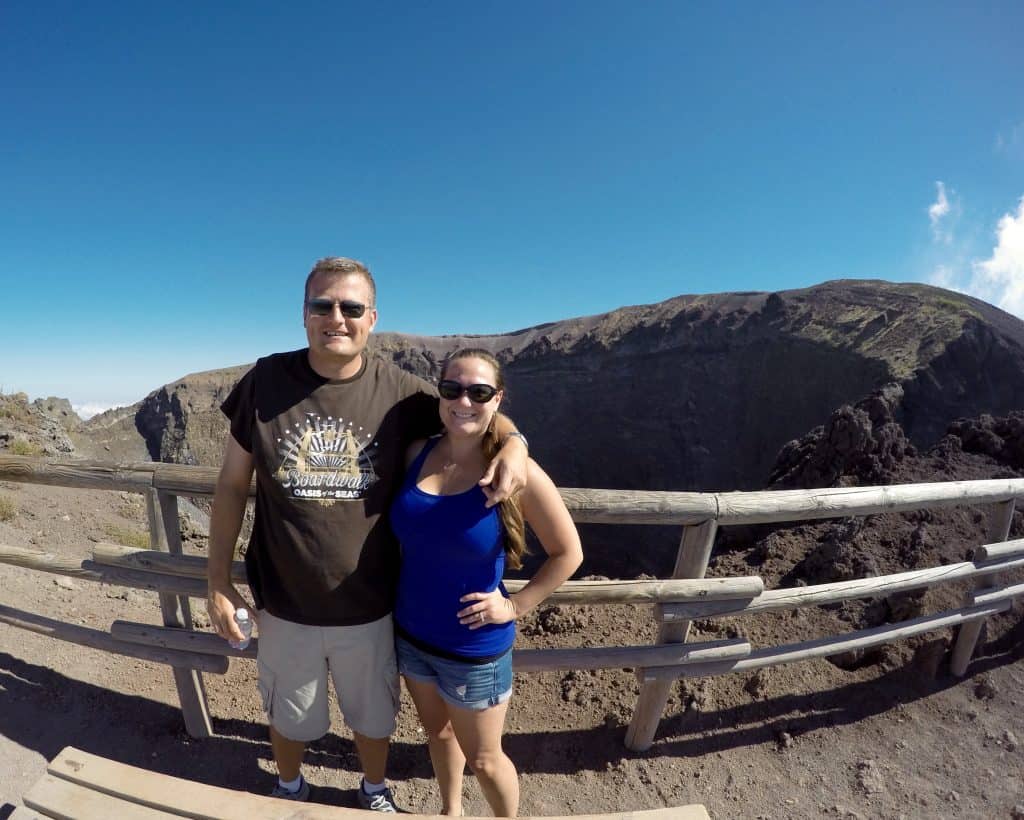
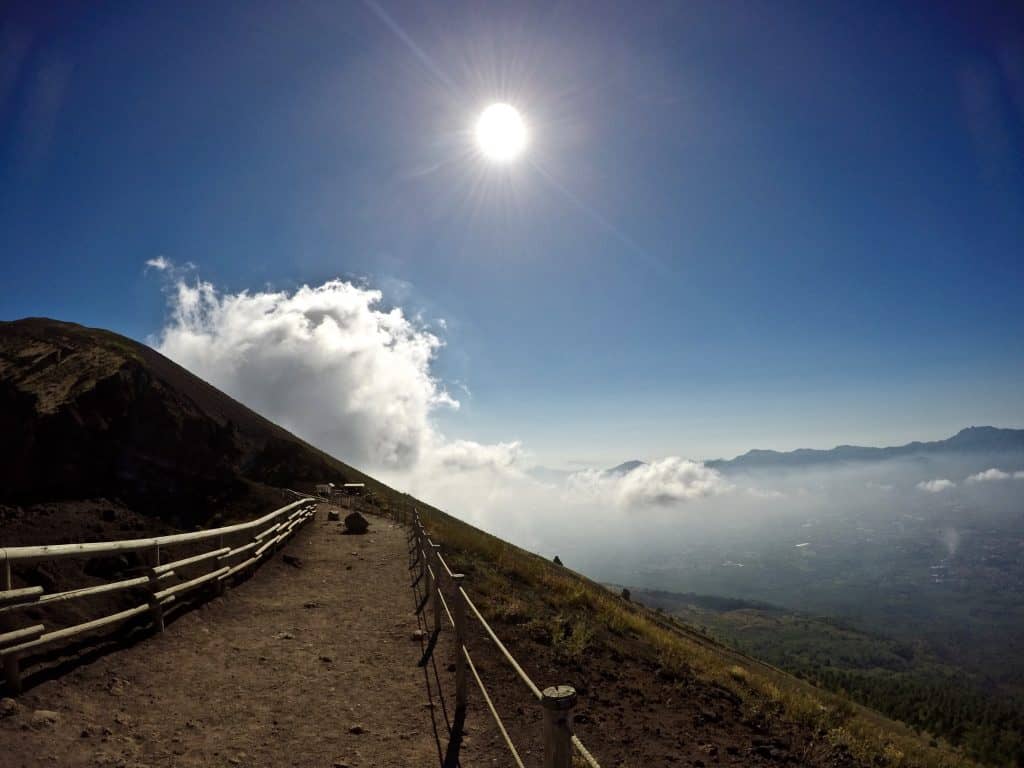
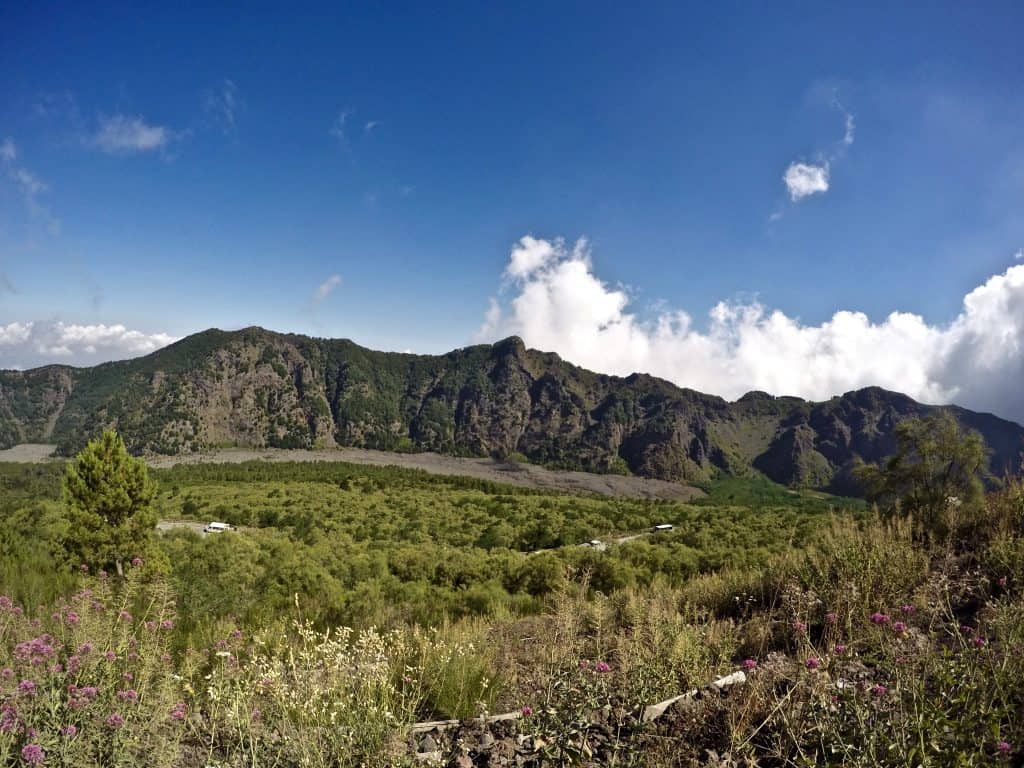
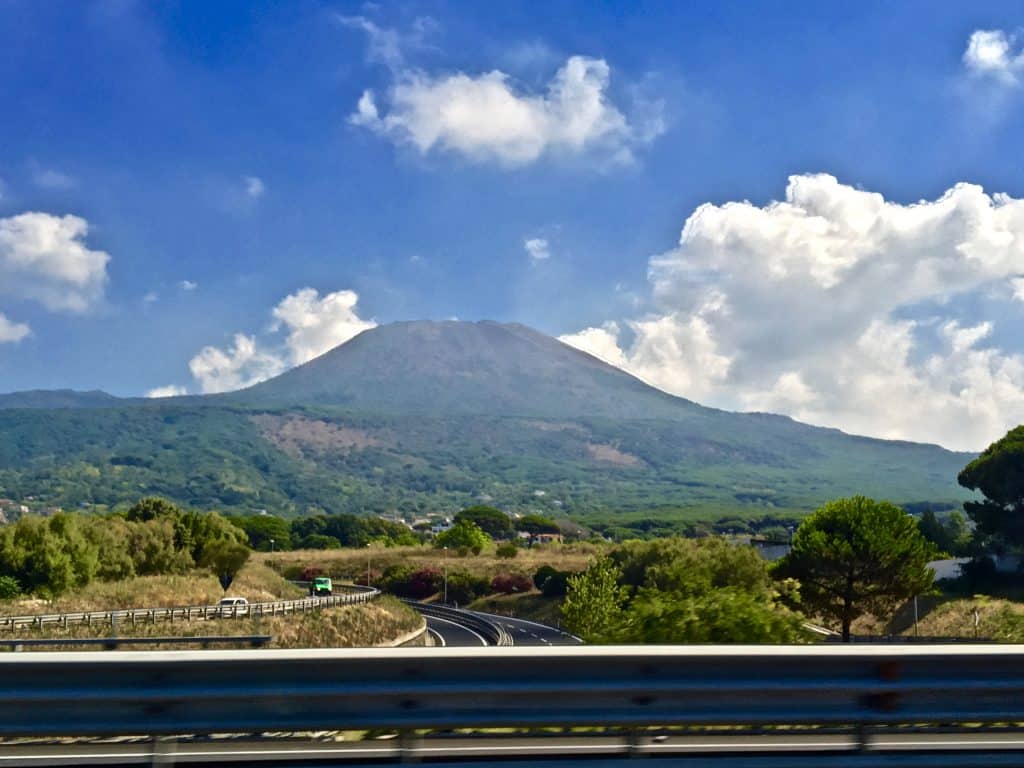


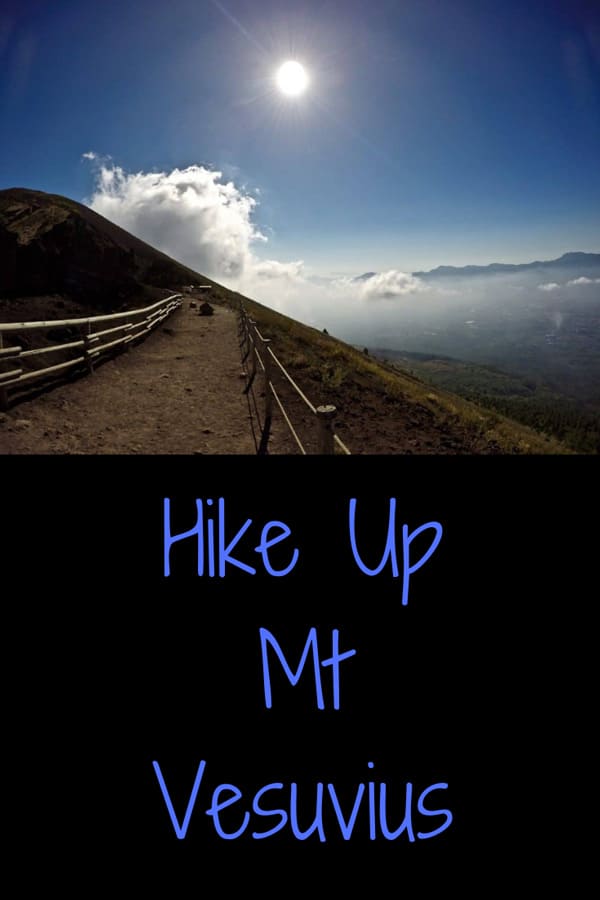

Leave A Comment